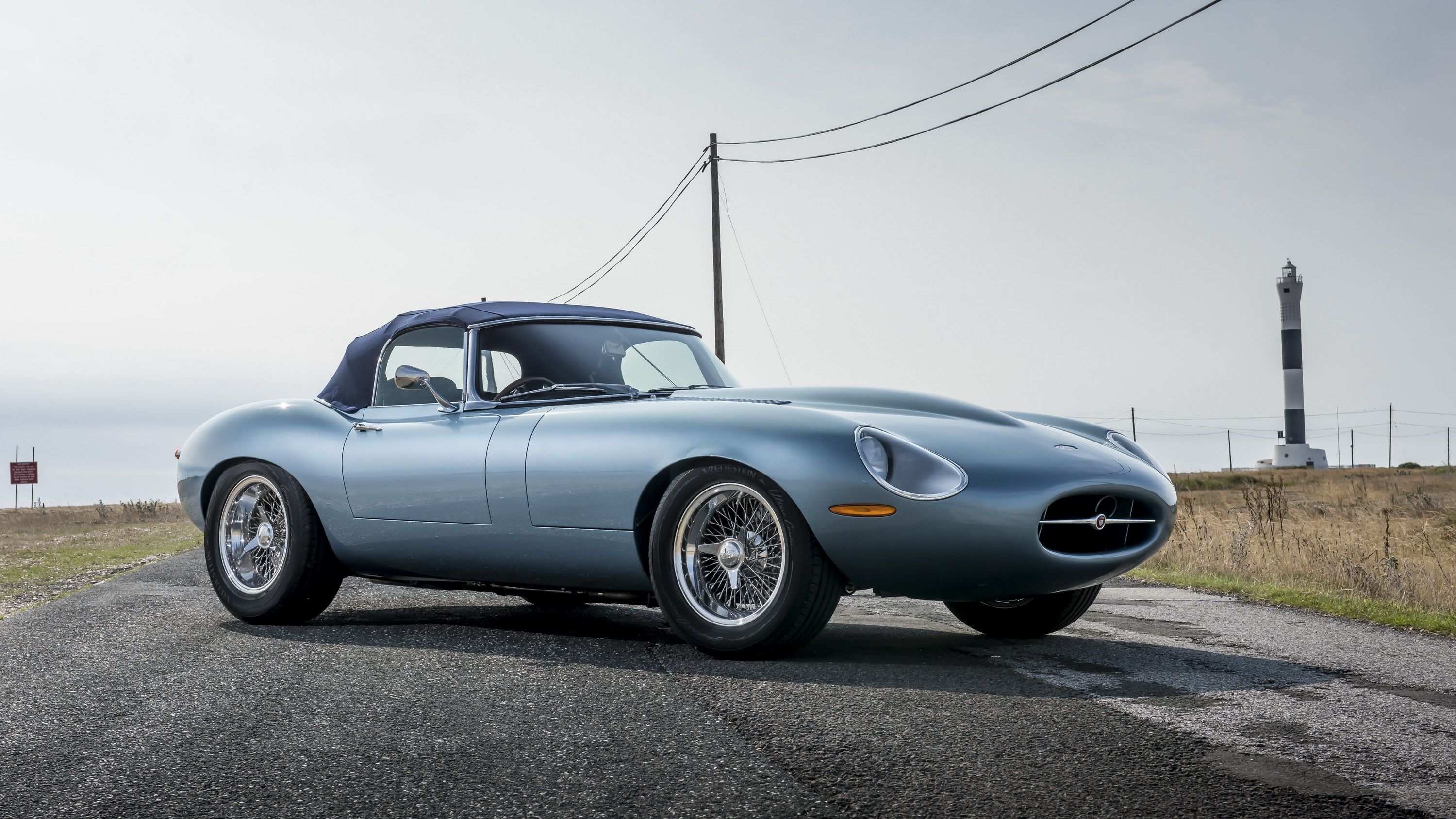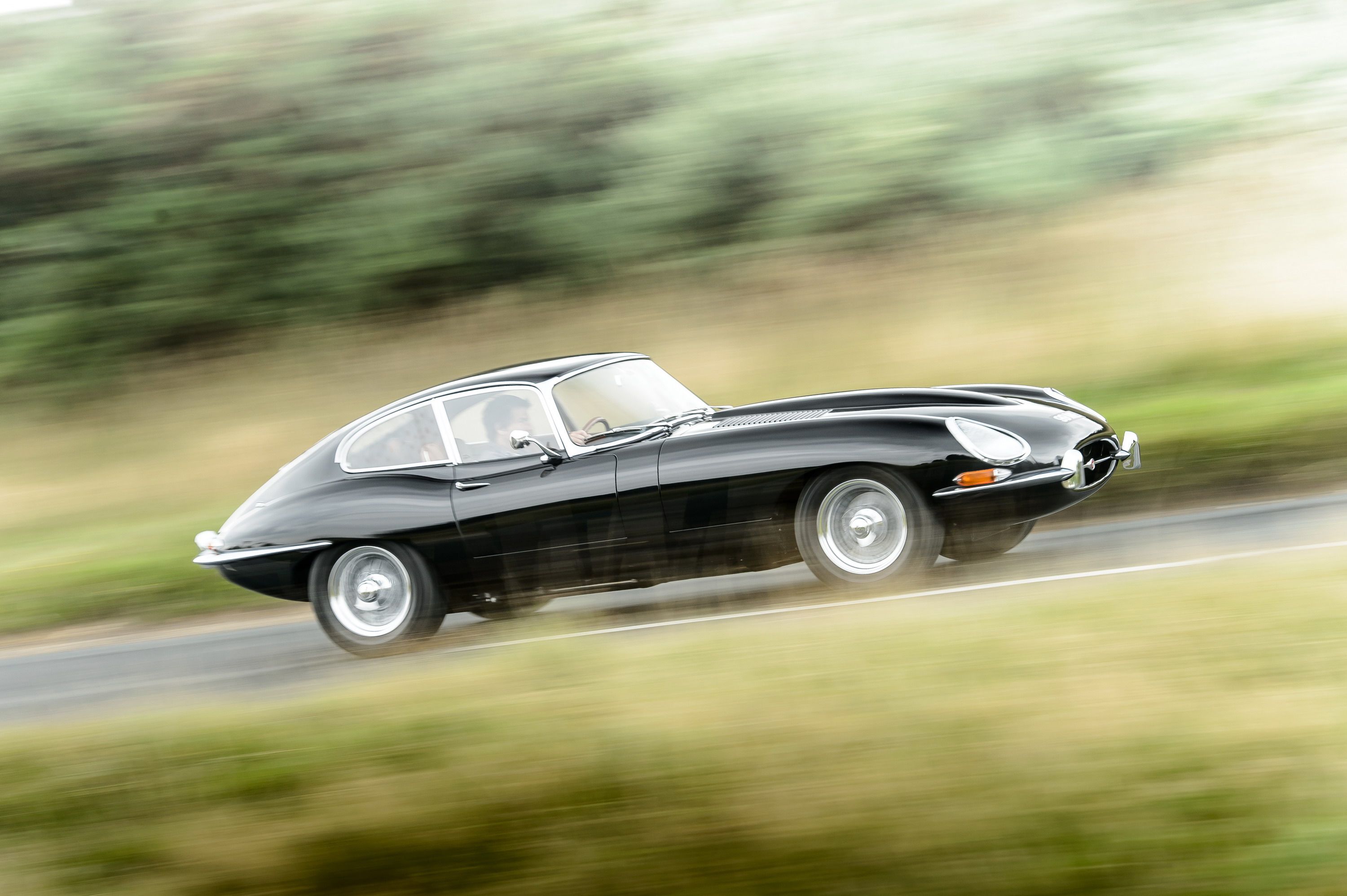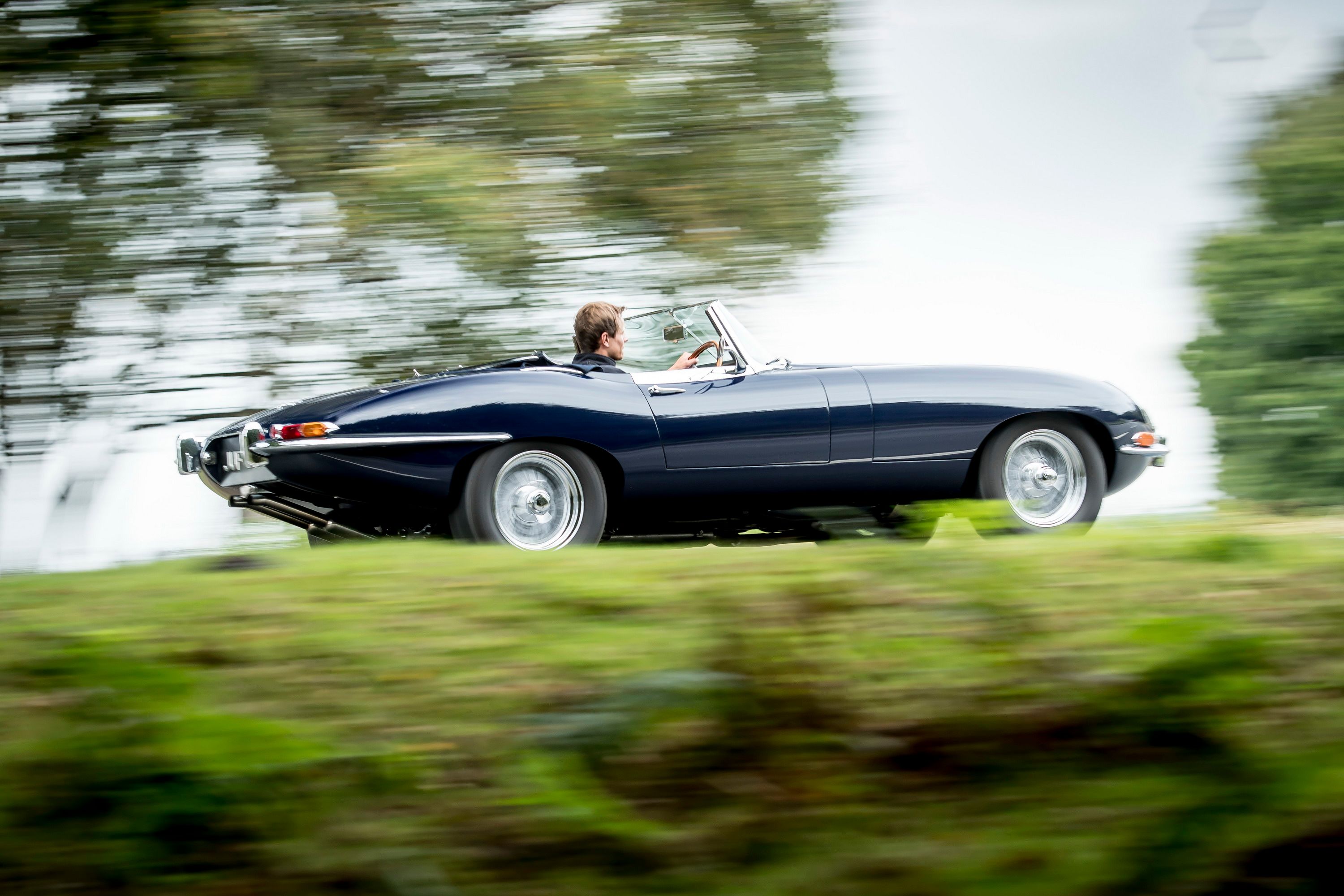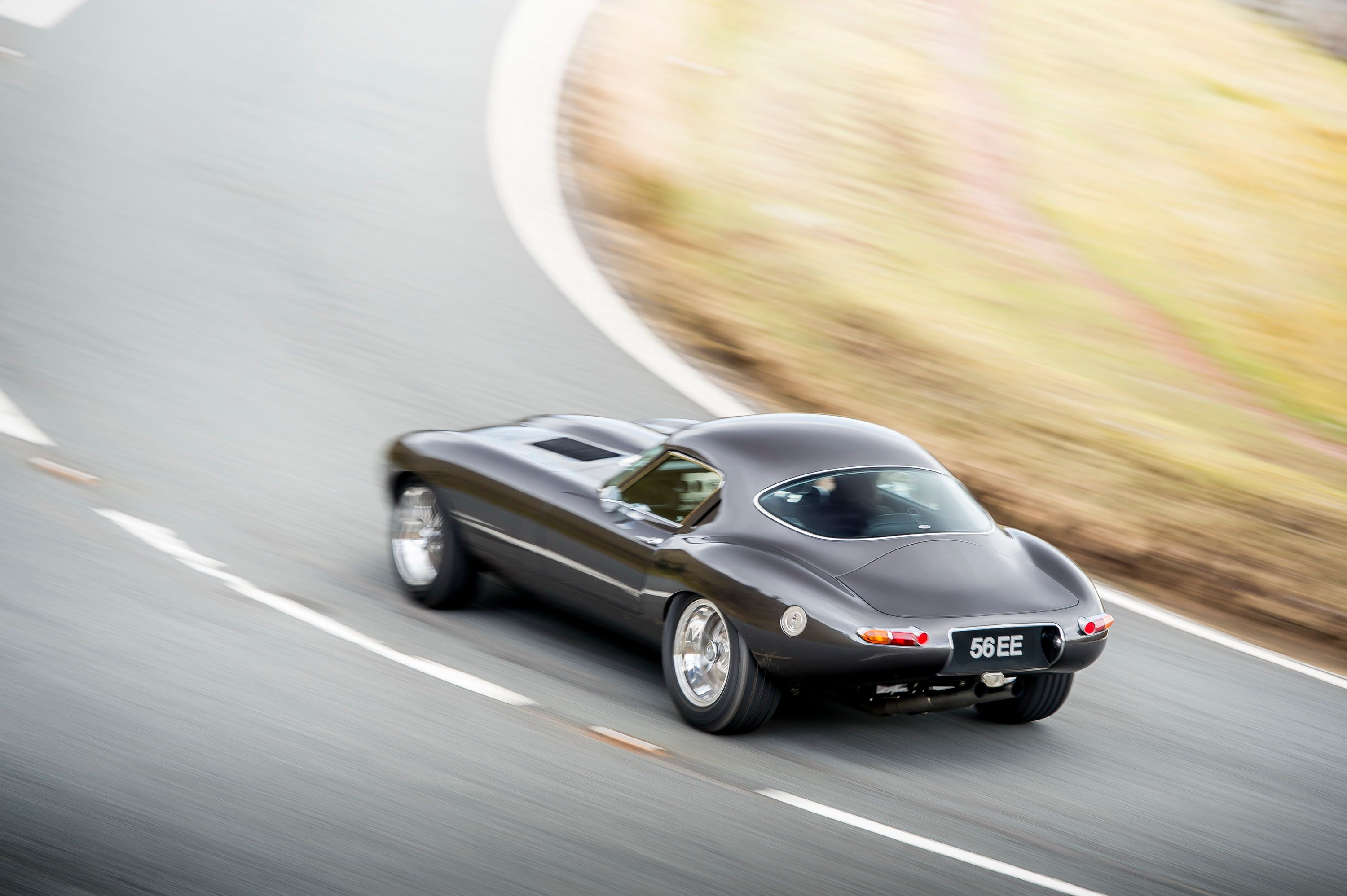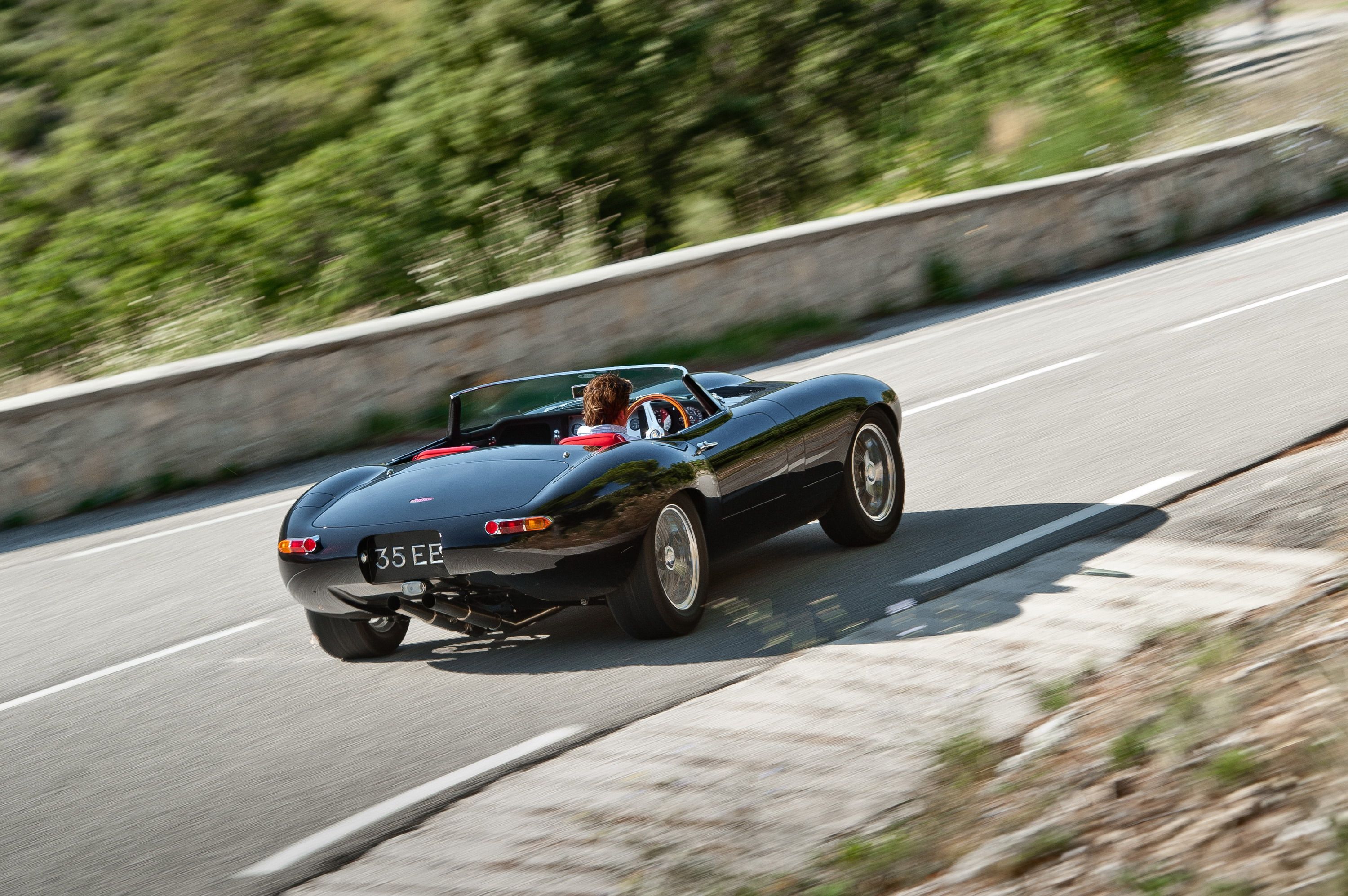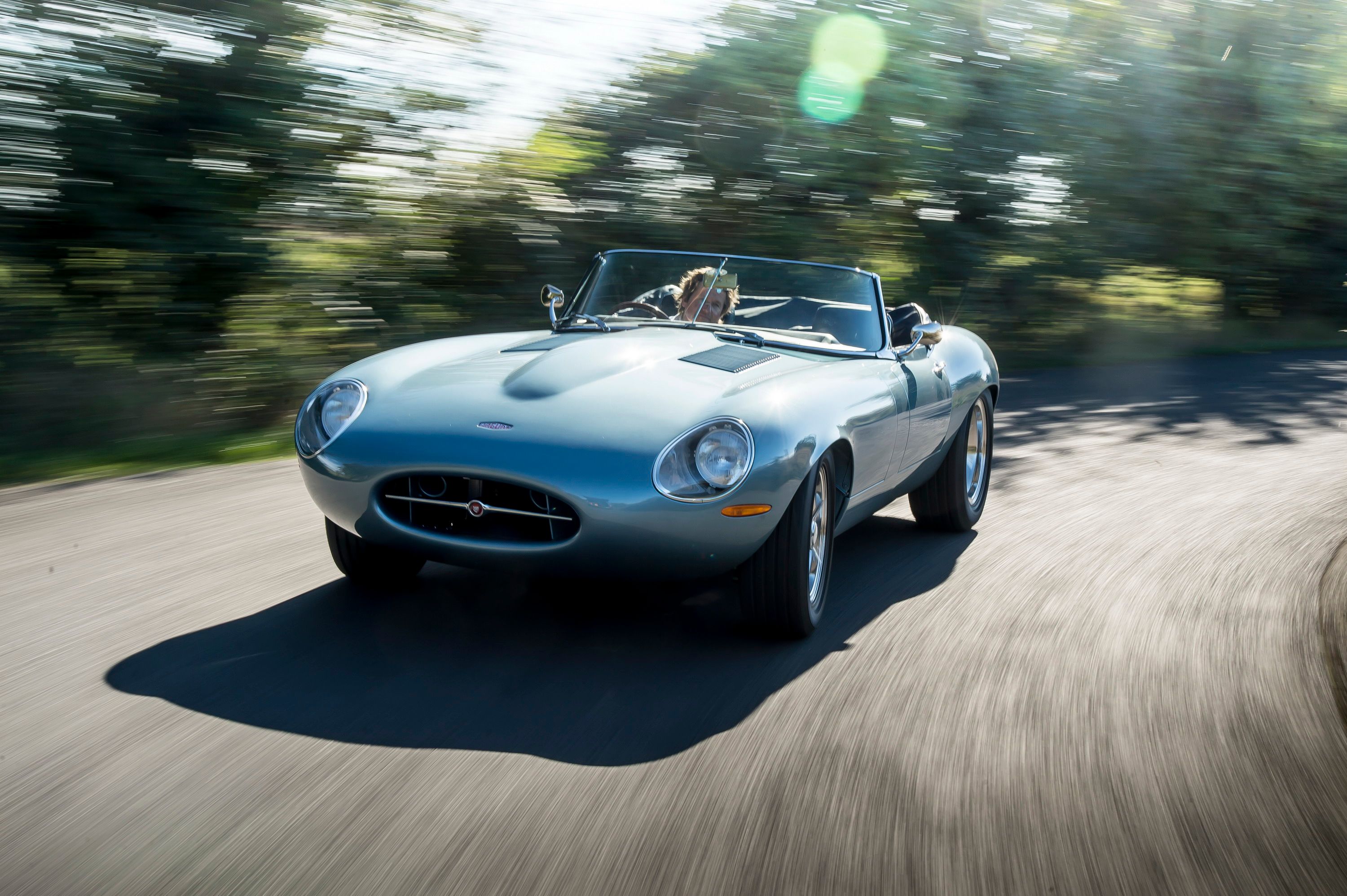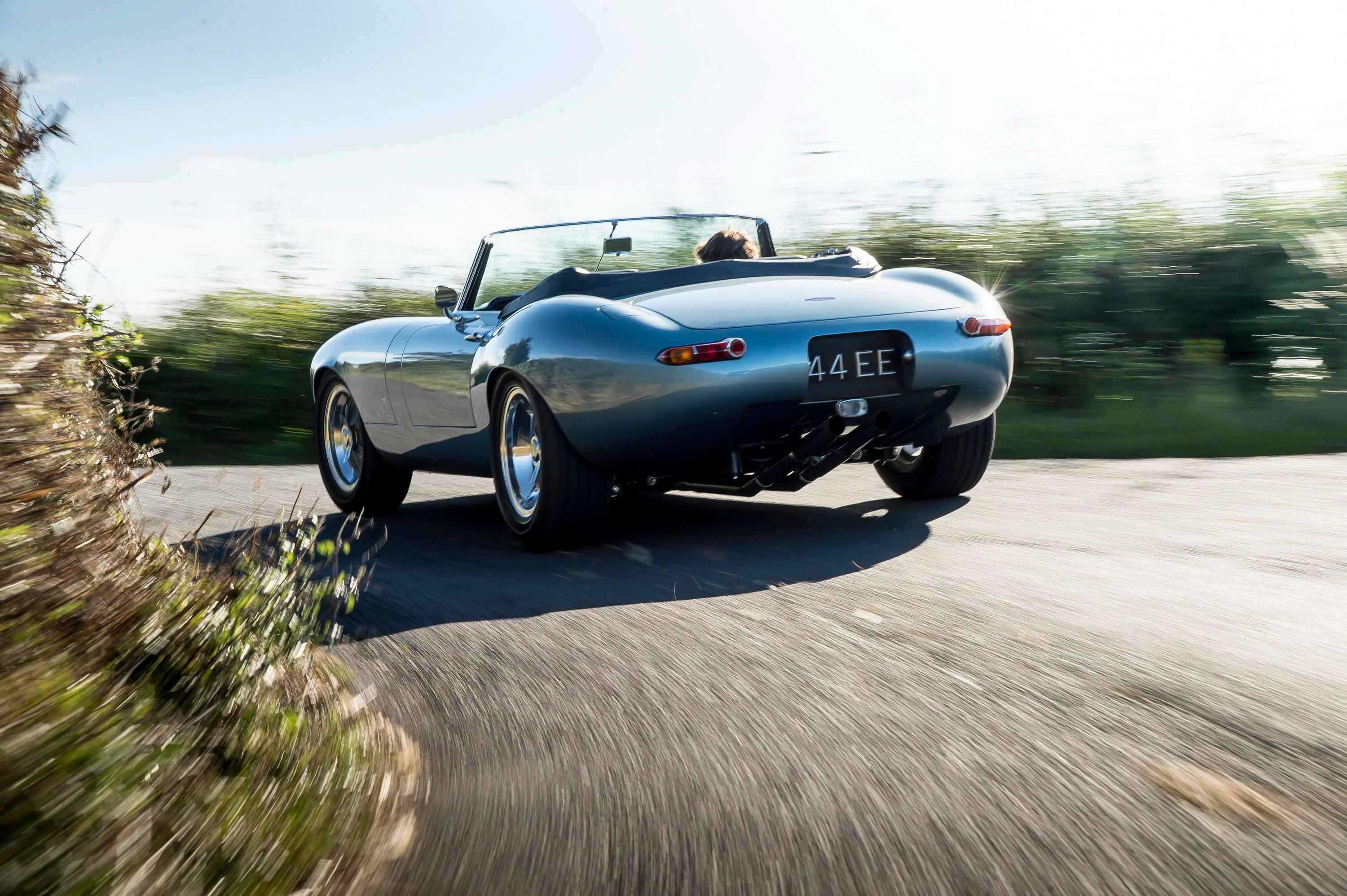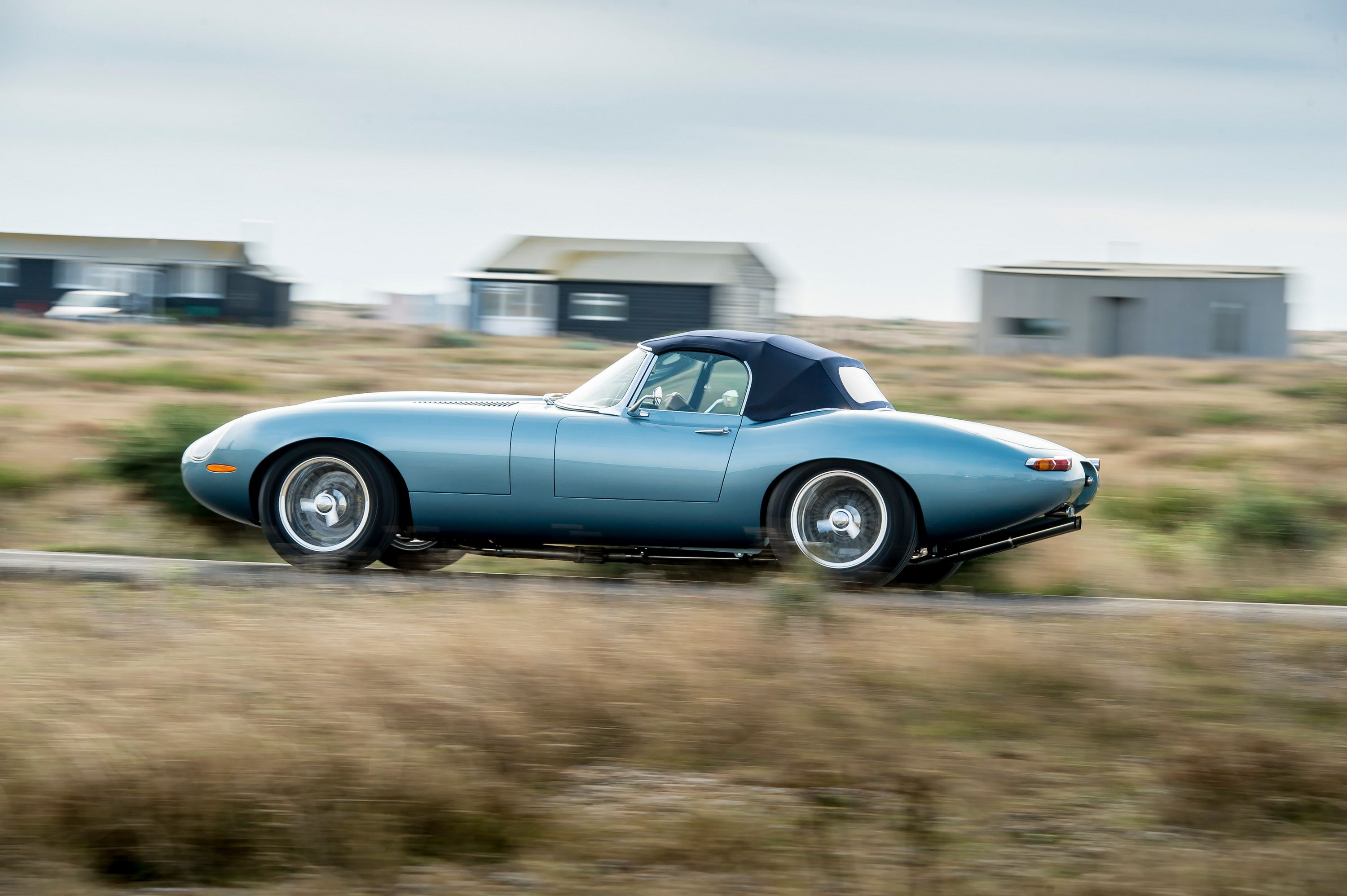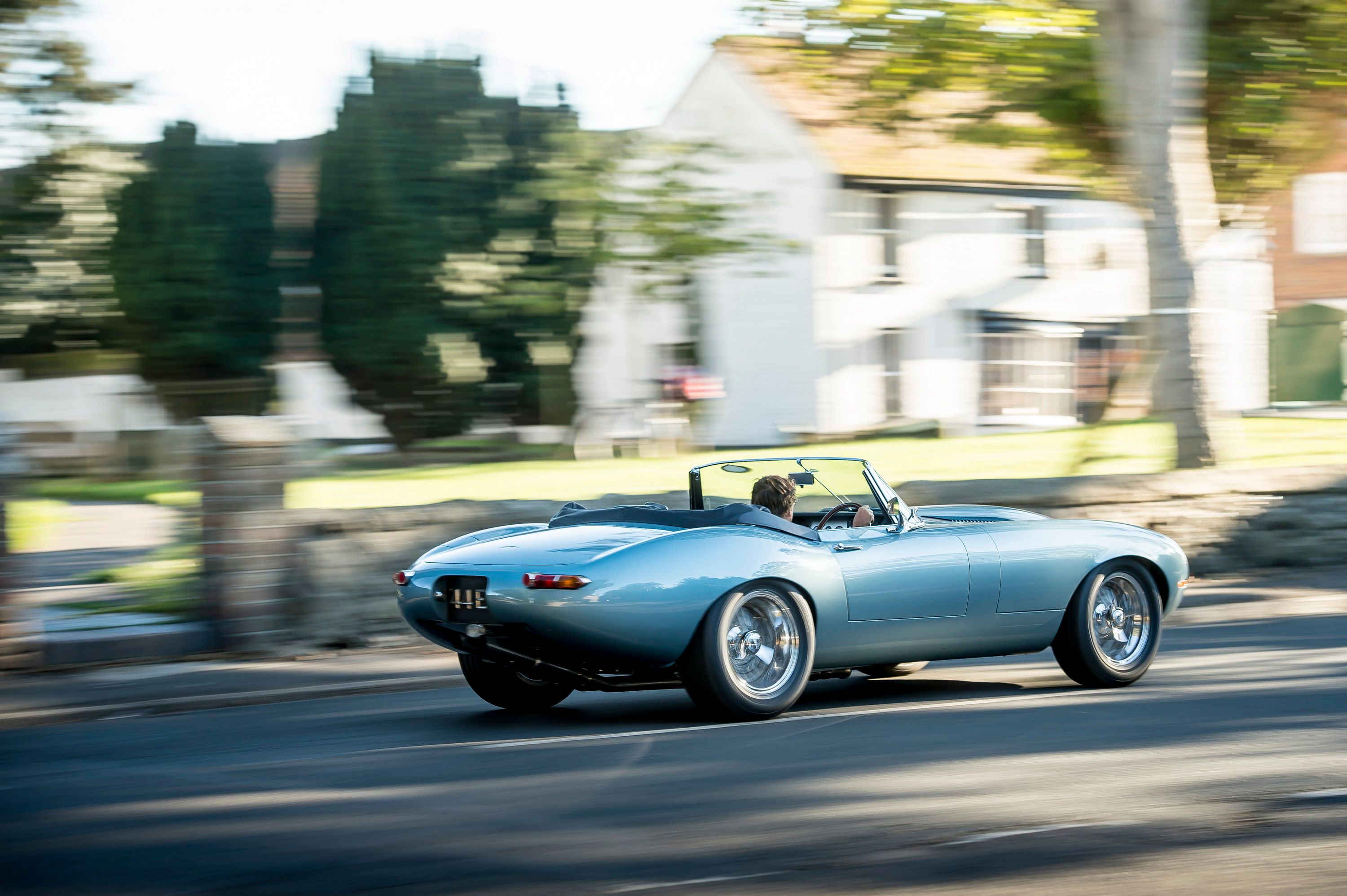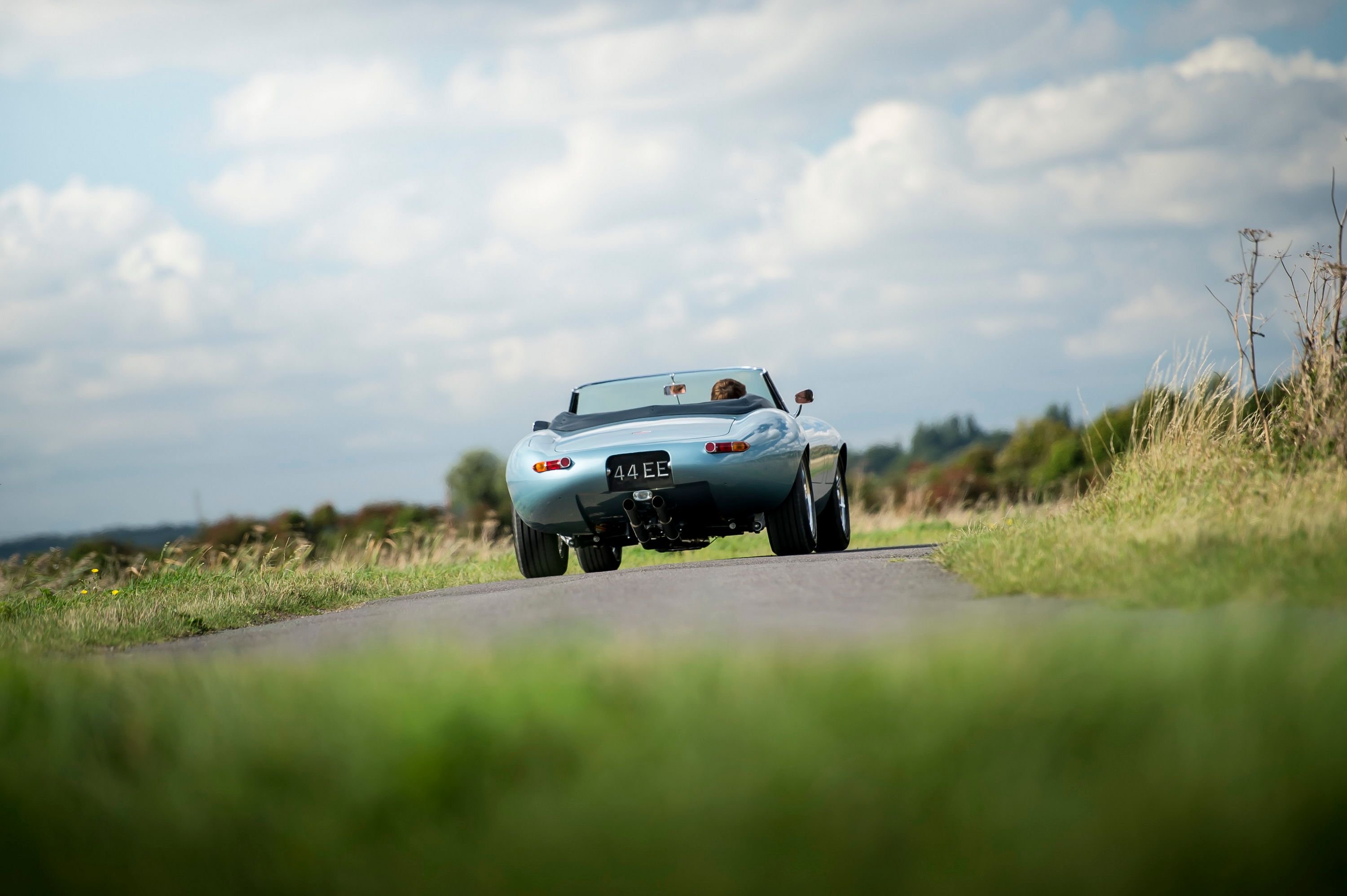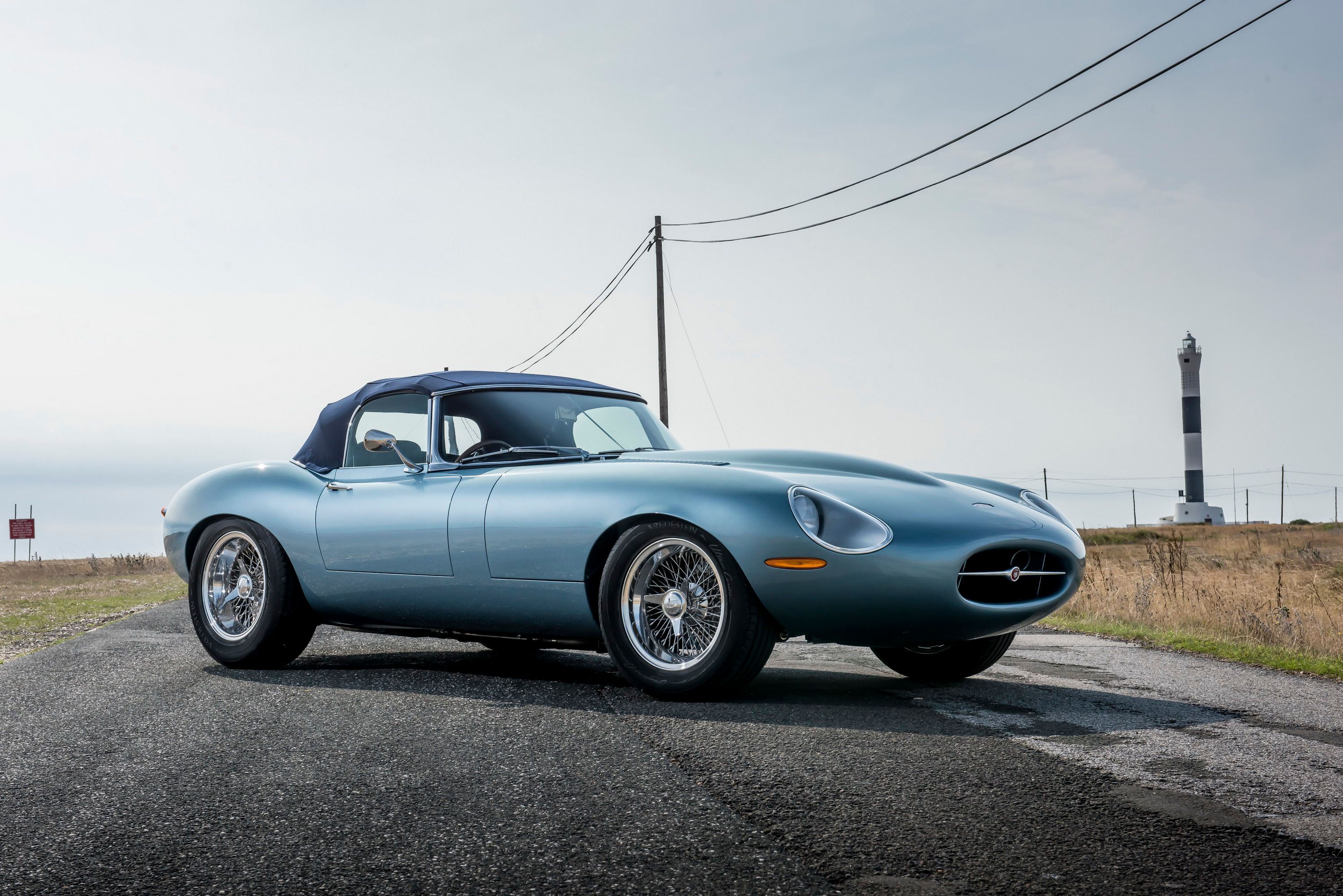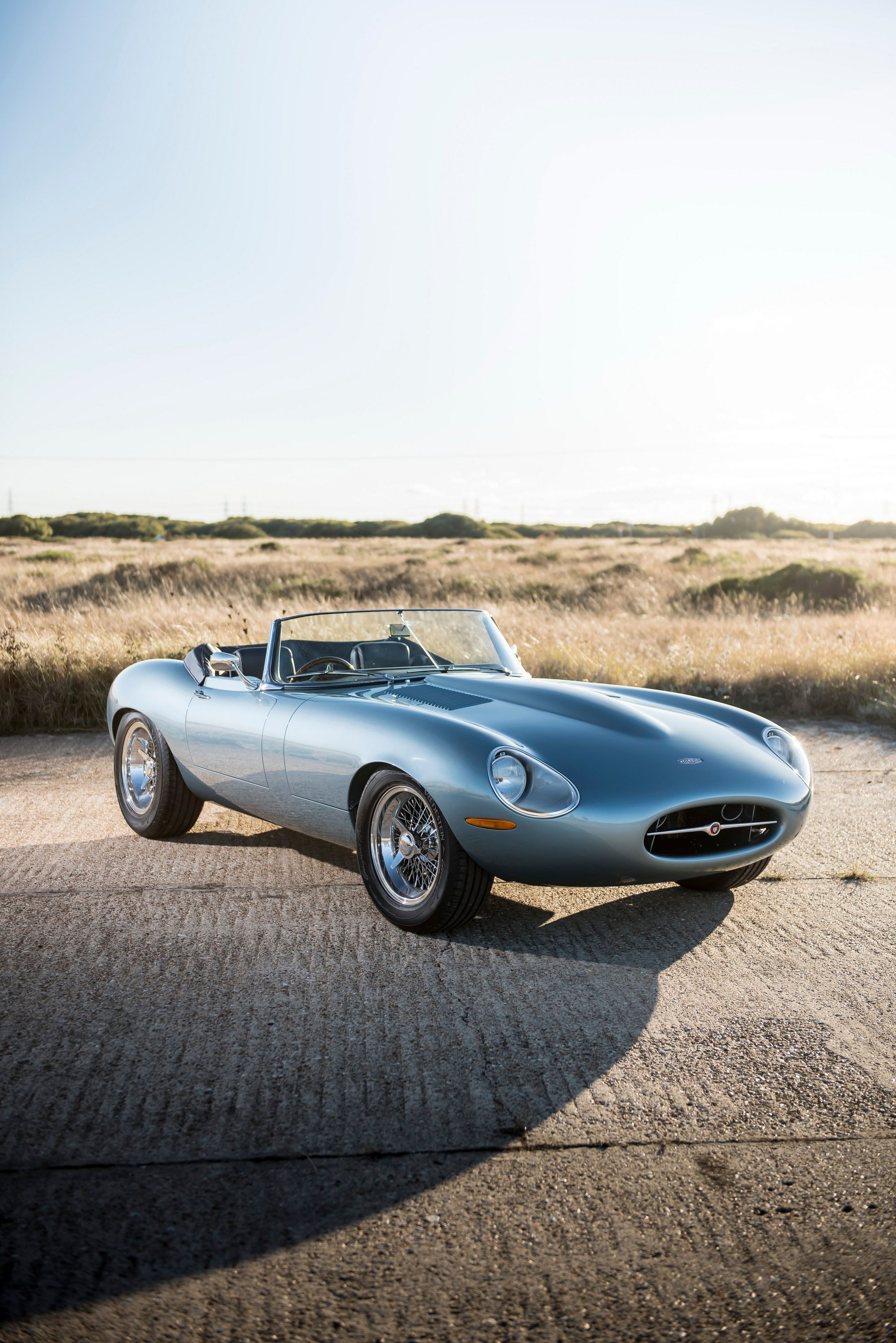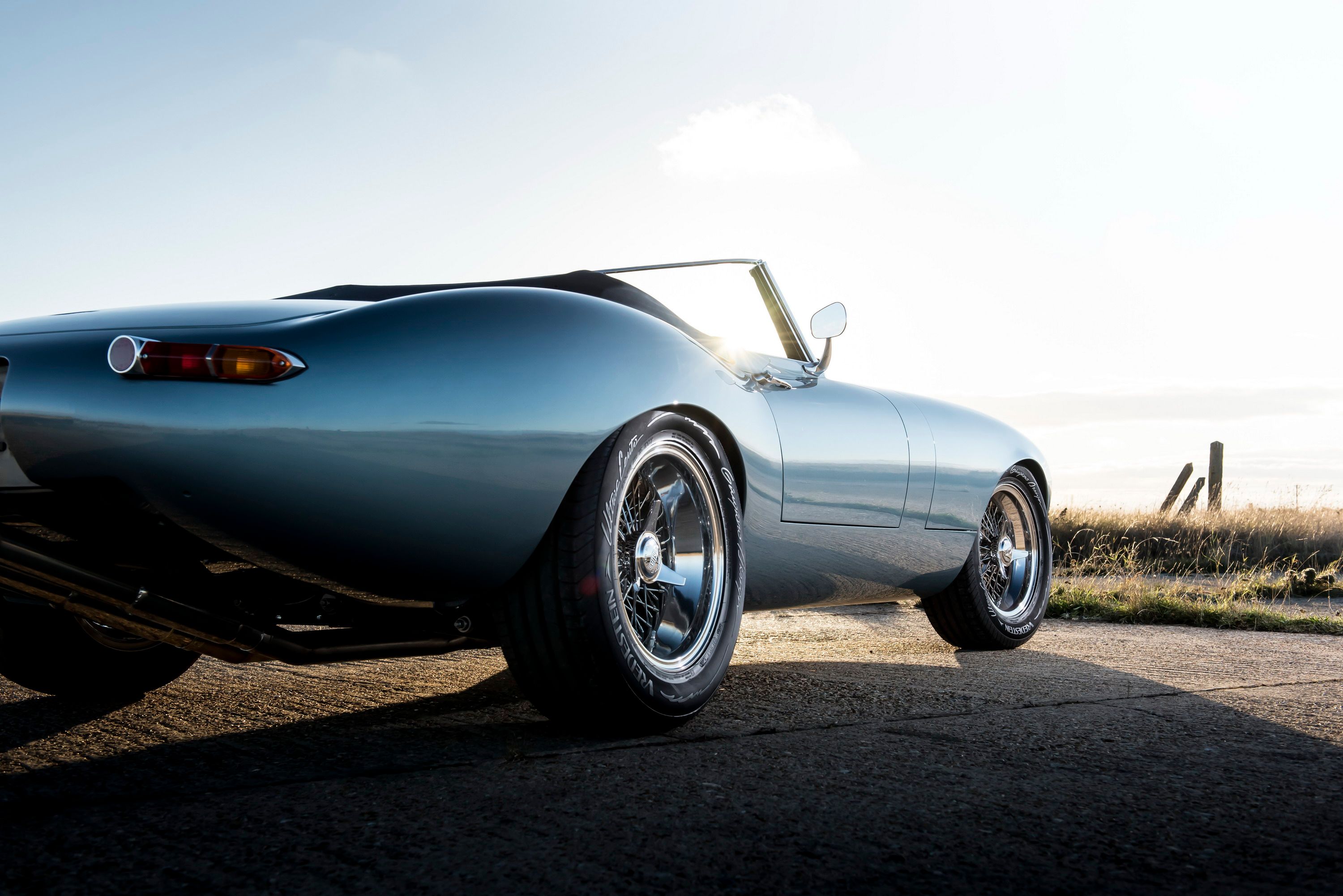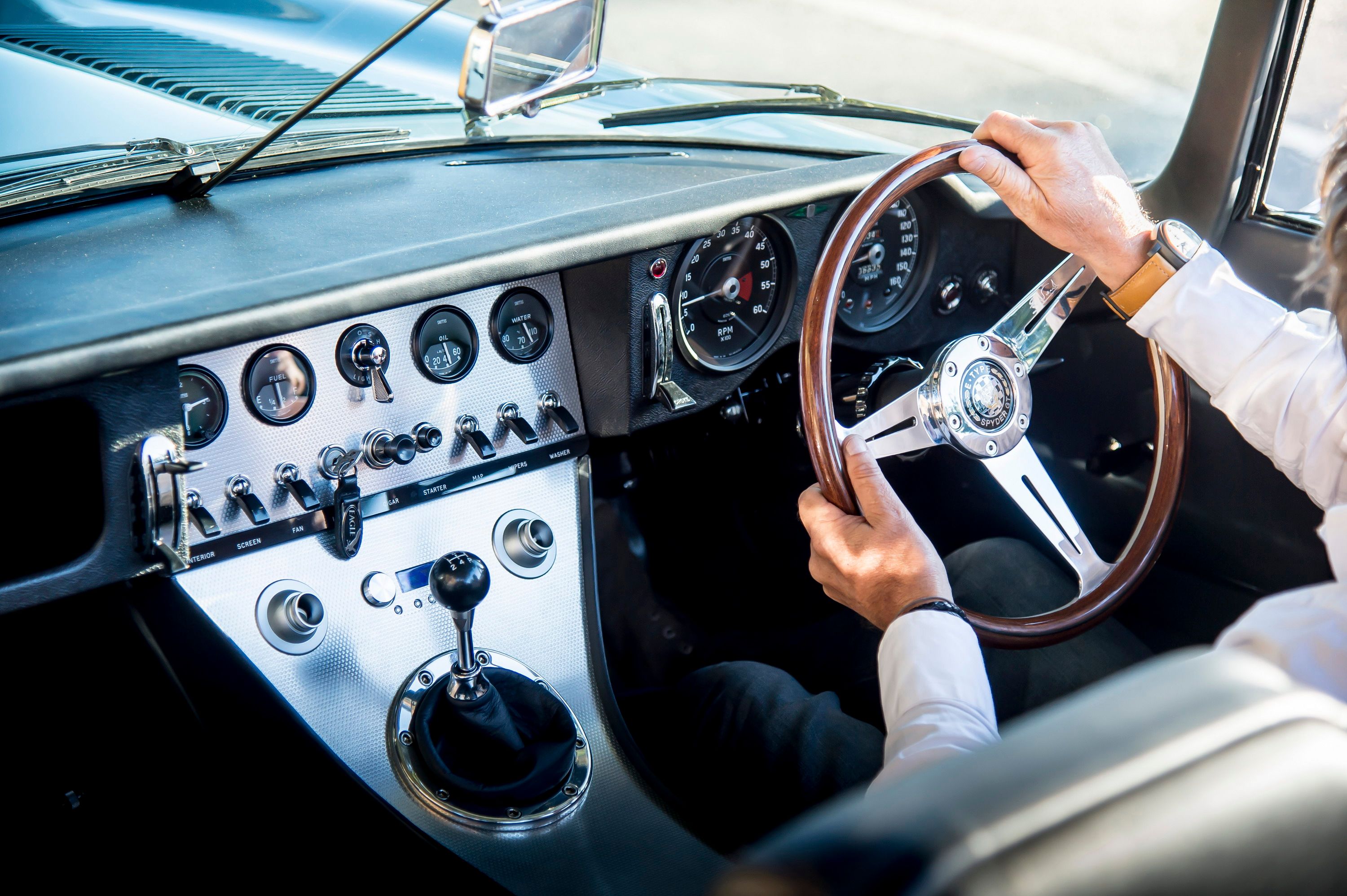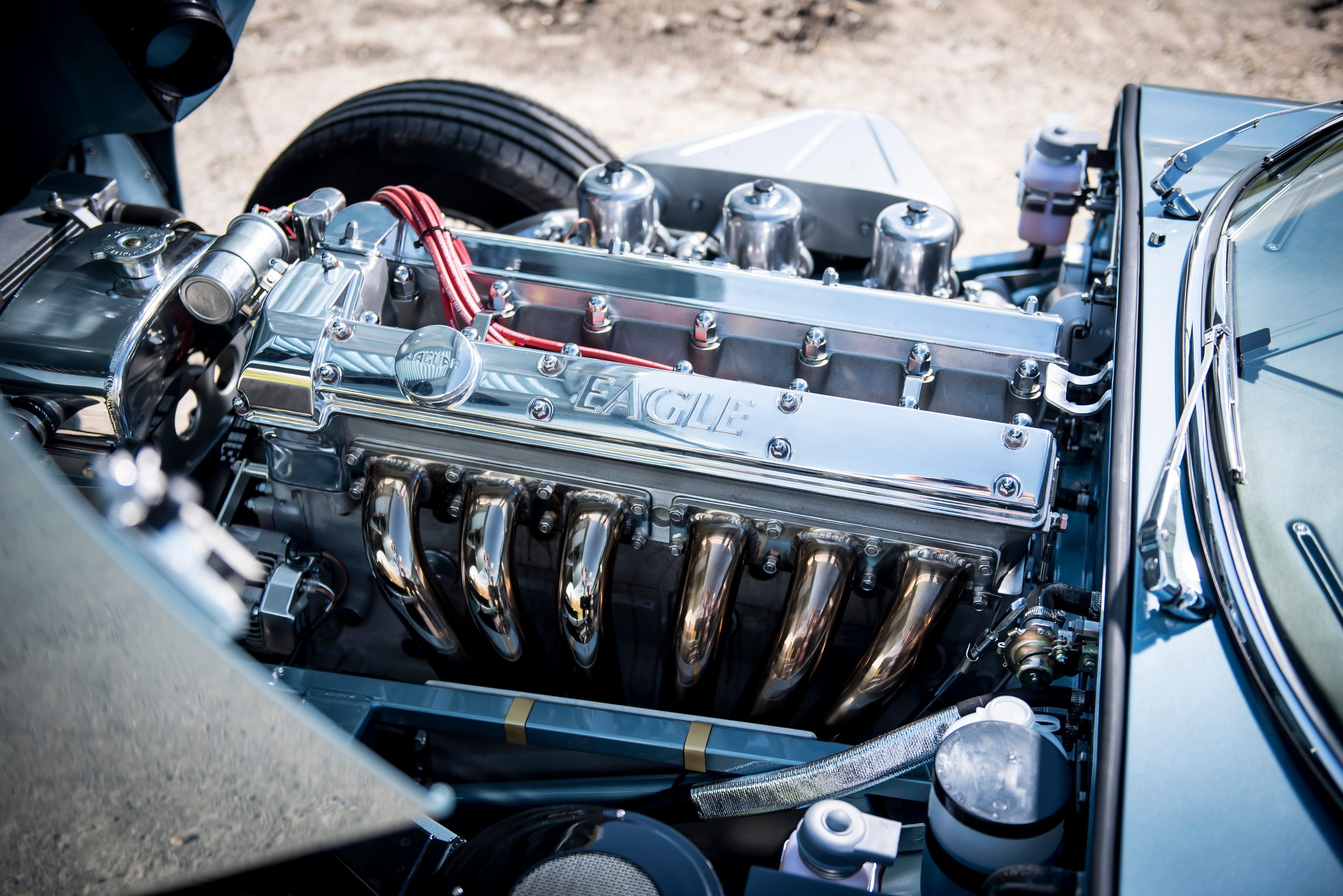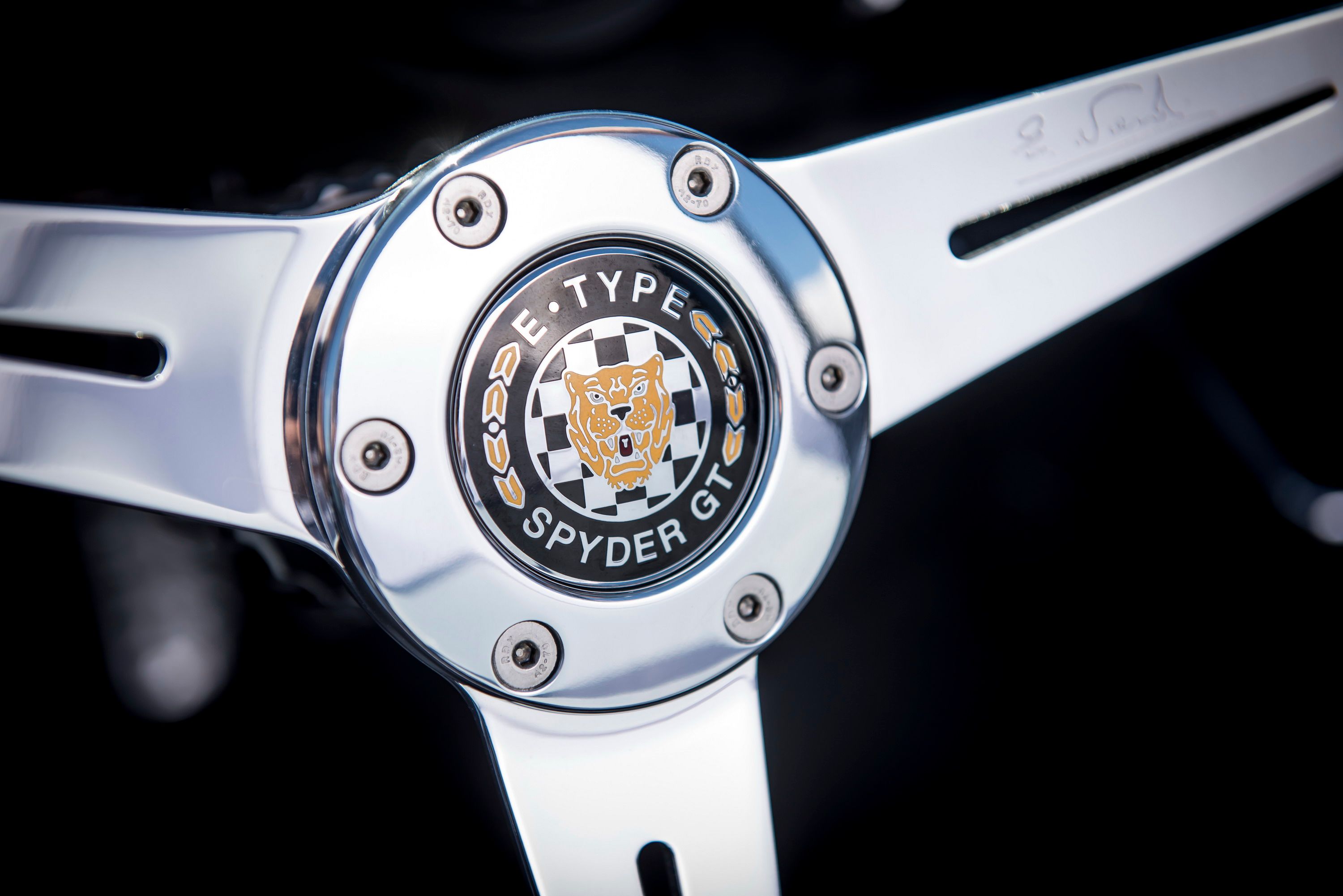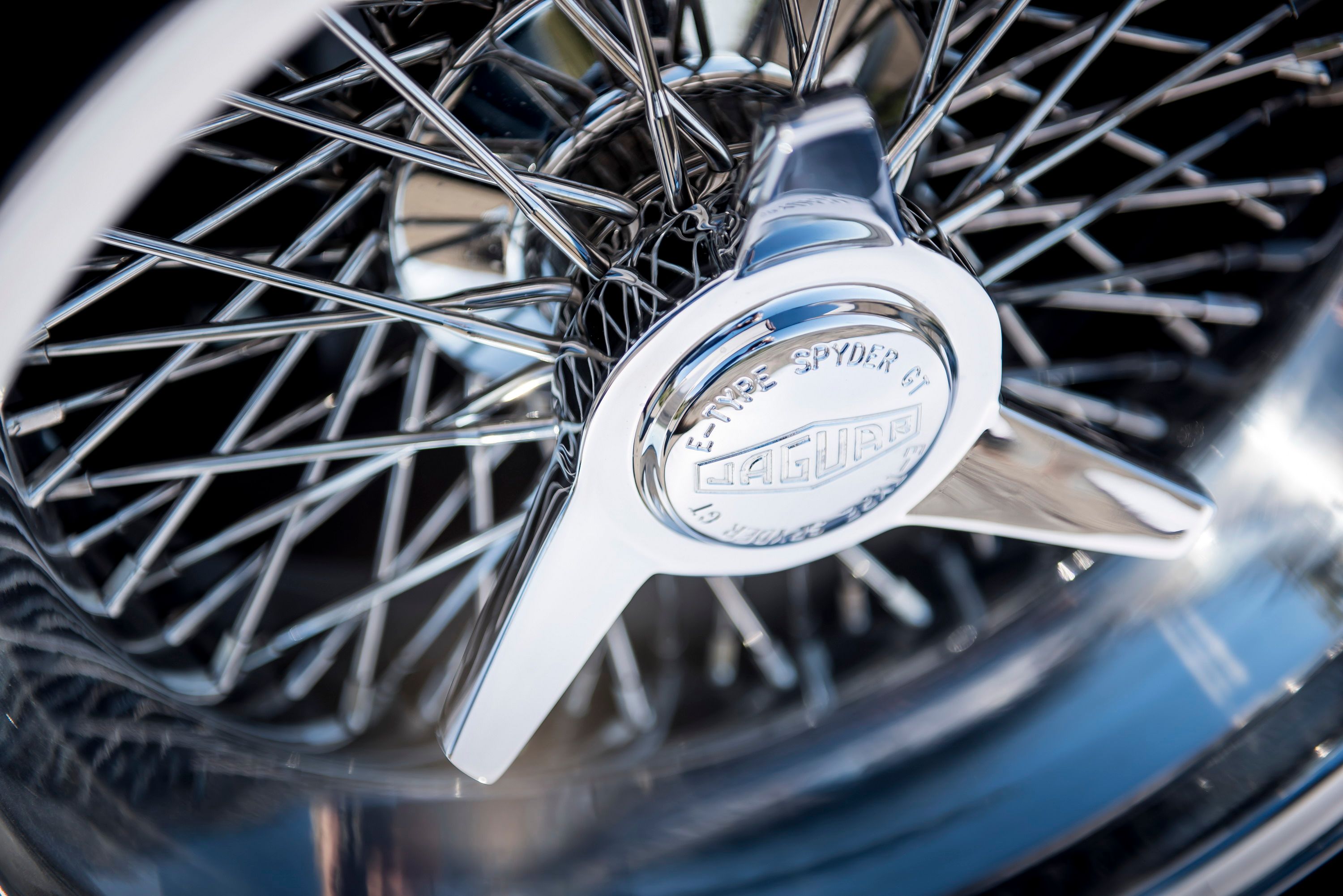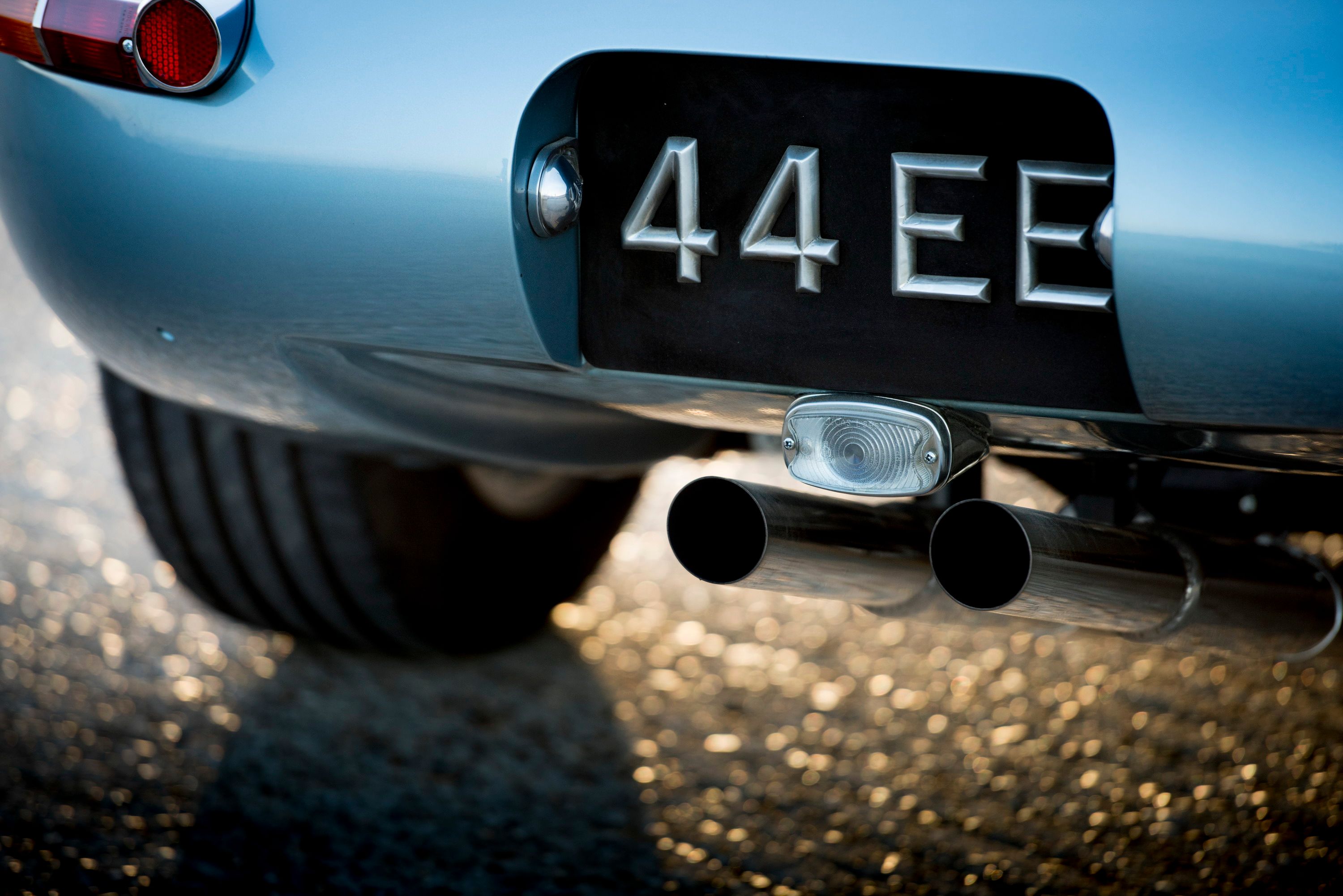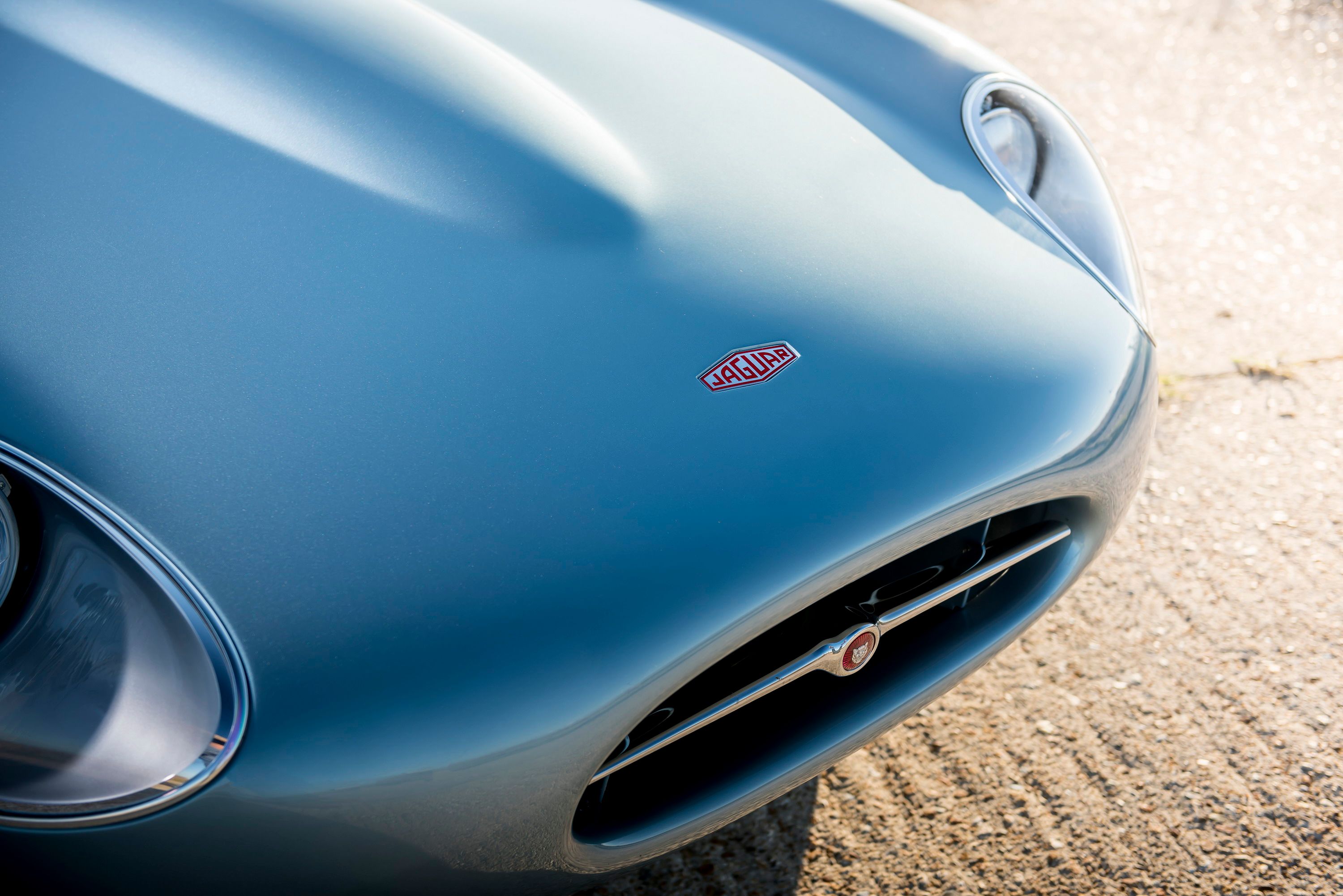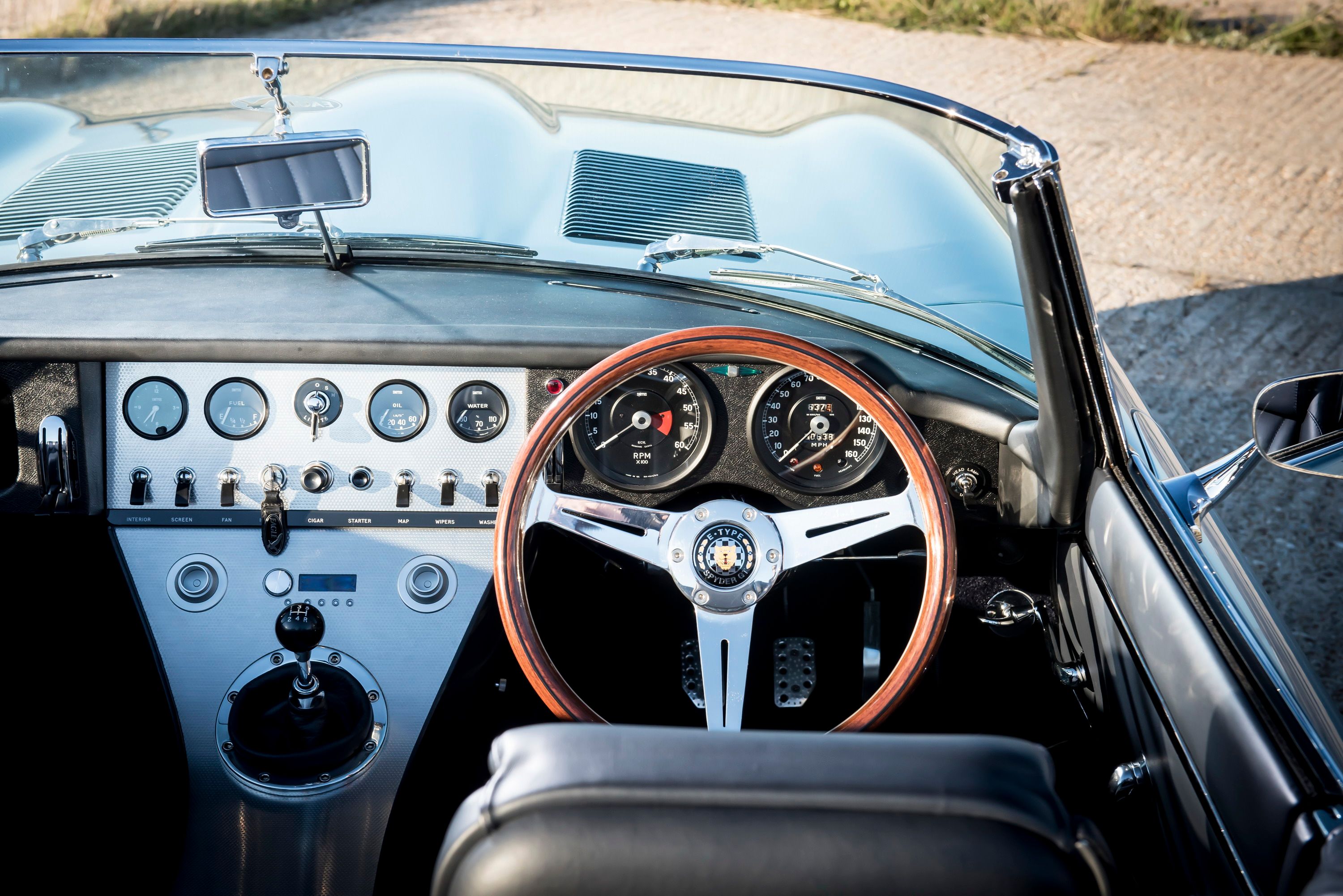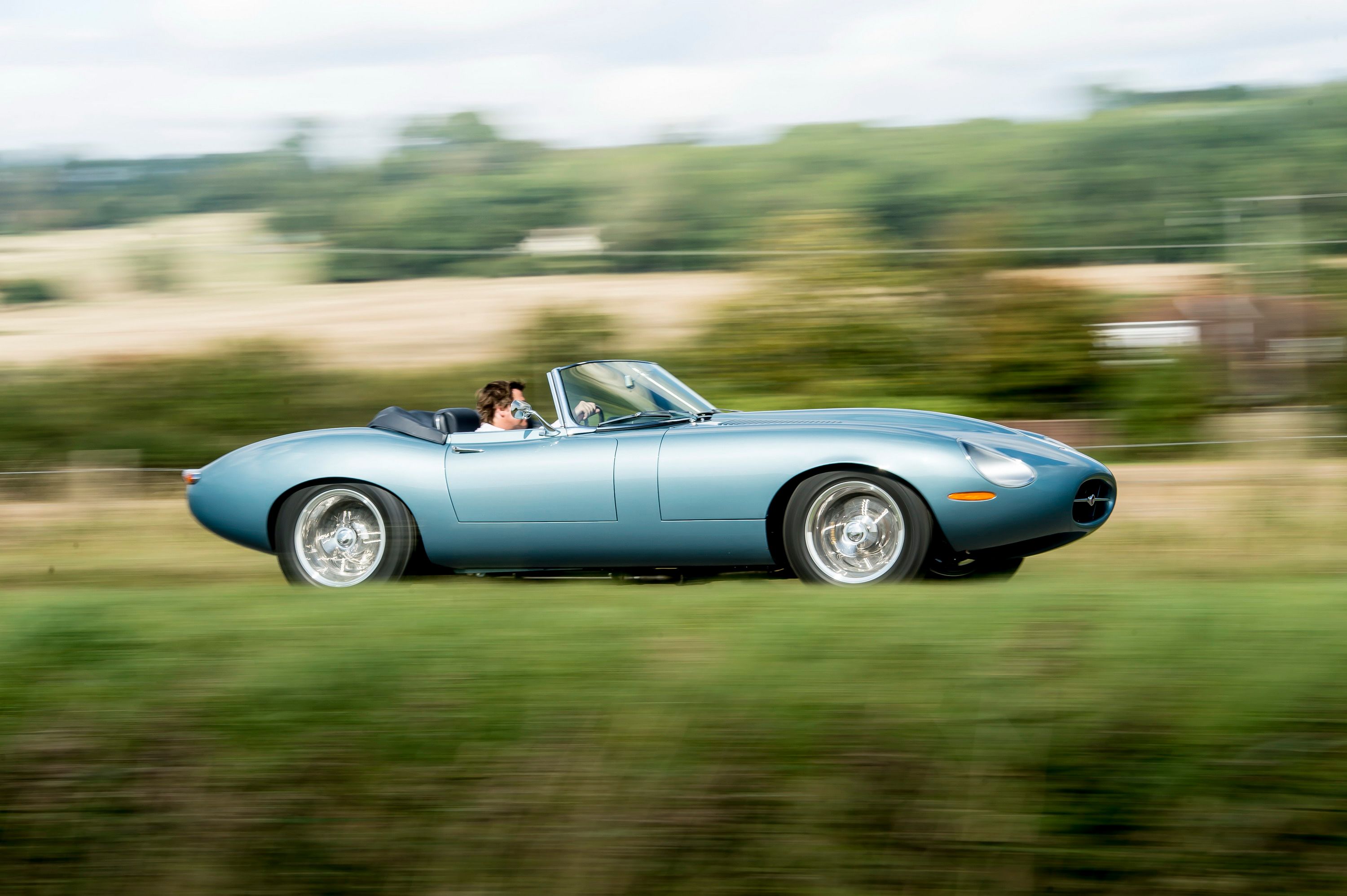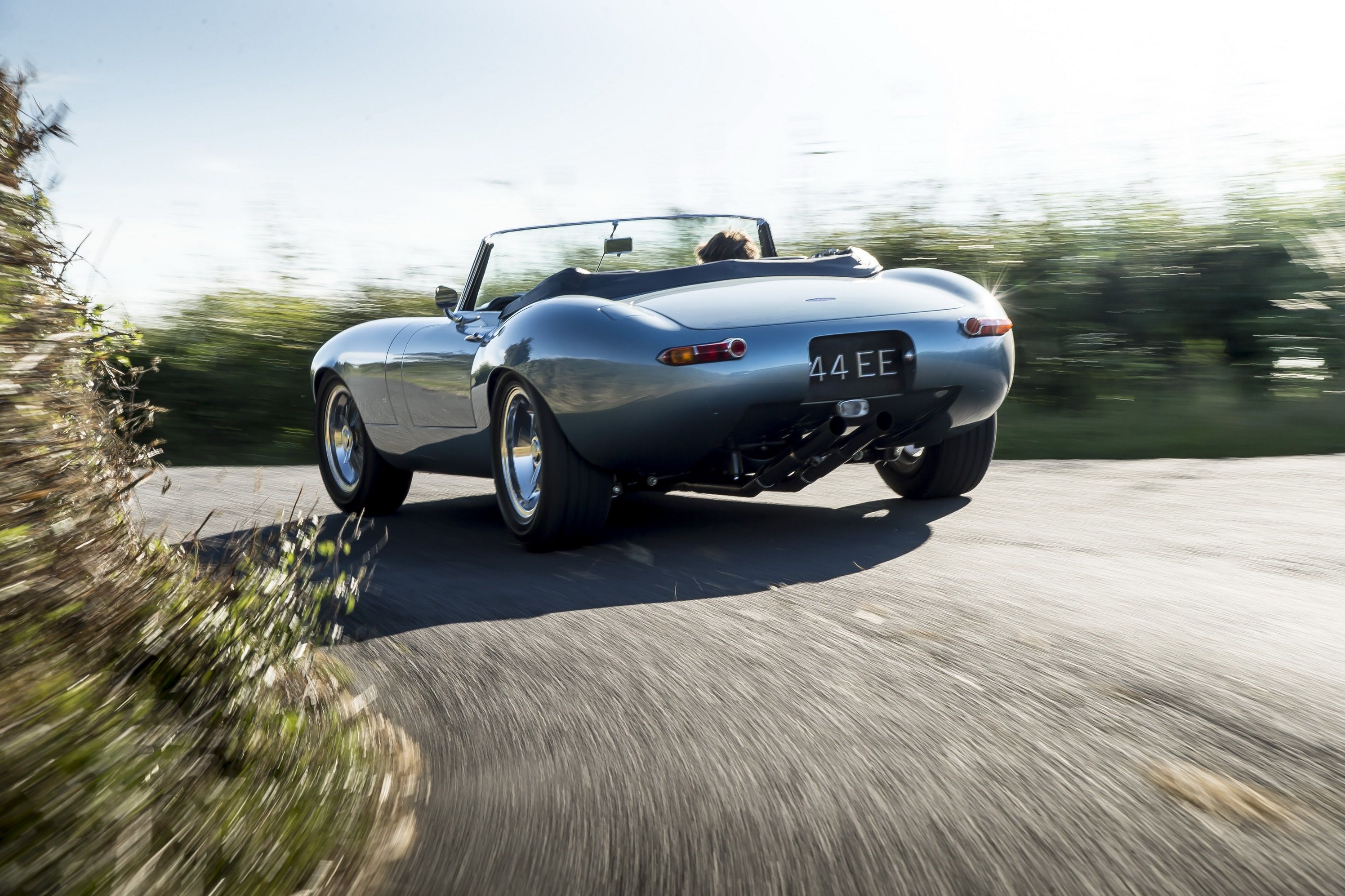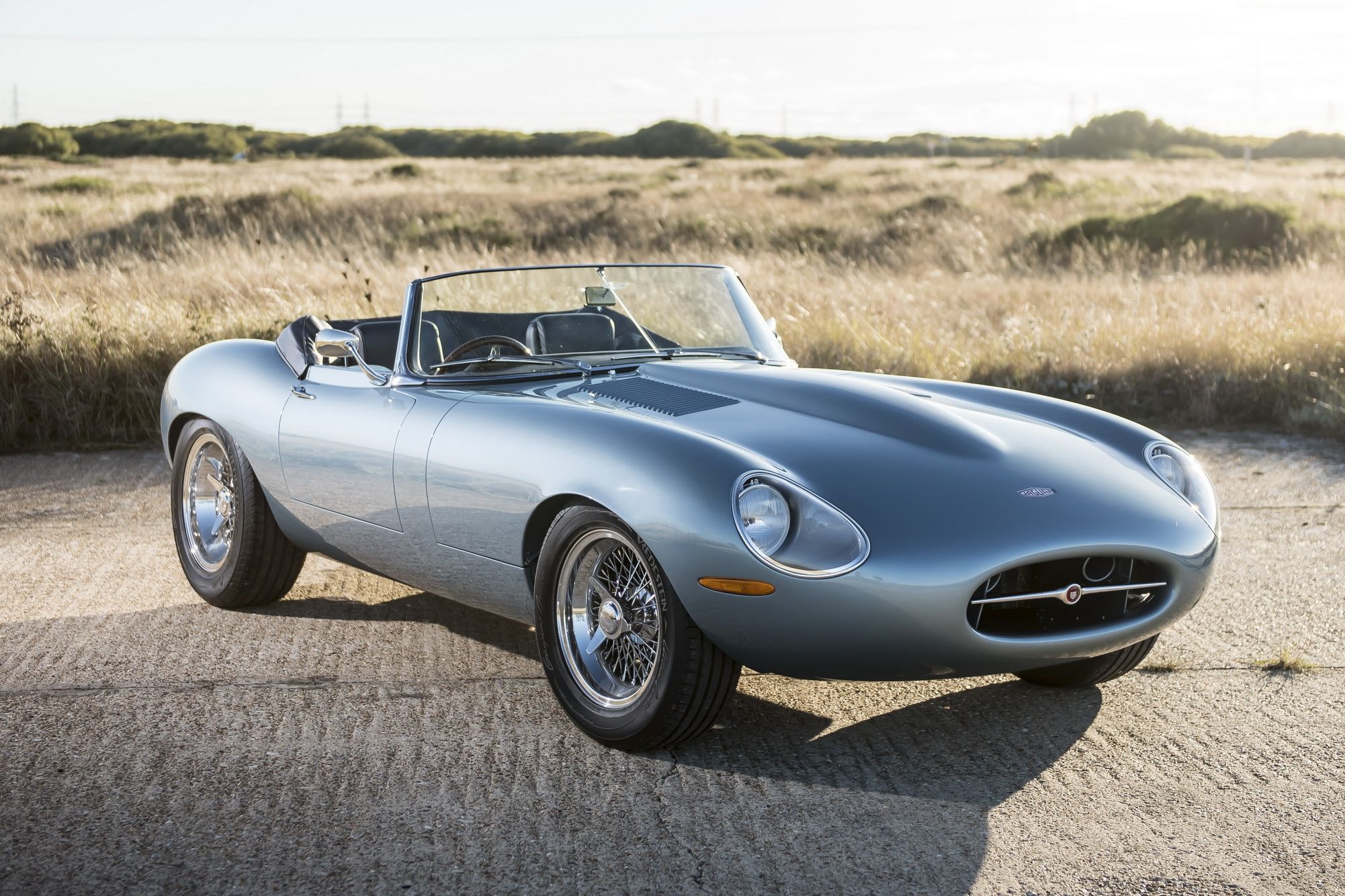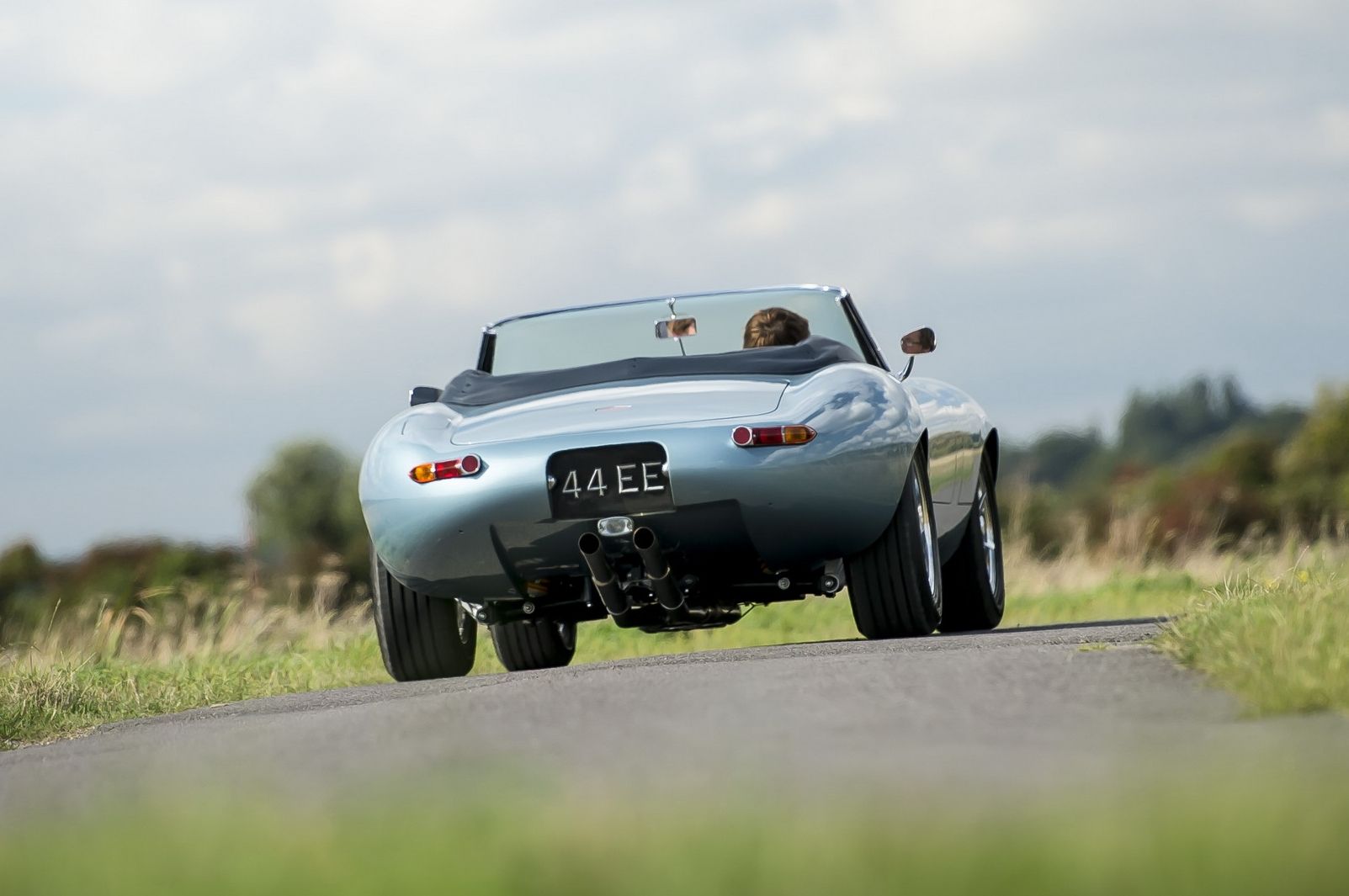Back in March of 2015, we ran a quick little article on “The Most Beautiful Cars Ever Built” wherein each TopSpeed staff writer was asked to submit their personal pick for the honorary title. Mine was the Eagle E-Type Speedster, because as I said in the piece, “every angle is heavenly. The body panels transcend time. On looks alone, the Brits have done it right here.” I still think that’s true, but now, Eagle is at it once again with this angelic creation – the Eagle Spyder GT. First announced at the London Classic Car Show in 2016, the Spyder GT is a lot like the rest of Eagle Special Edition lineup. It’s essentially a highly customized Jaguar E-Type, melding old school prestige with modern hand-built excellence. It’s lightweight, comfortable, packed with modern suspension, topped with a foldable fabric roof, and quick off the line thanks to a straight-six engine with over 300 horsepower. It’s also endlessly gorgeous to look at.
You could call it a “restomod,” but I think that’s a bit like calling Van Gogh’s “The Starry Night” a picture. This thing is a masterpiece, a rolling piece of artwork in every sense, and absolutely worthy of your lust and respect.
In case you were unaware, Eagle is a custom auto builder based out of the U.K. with more than three decades of experience creating bespoke E-Types. Out of that history, four Special Edition models have emerged, including the original Eagle E-Type, the Eagle Speedster, the Eagle Low Drag GT, and now this; the Eagle Spyder GT.
Each of the Eagle Special Edition models is destined for extremely low production numbers, and the new Spyder GT is no different. Given the level of customization Eagle can perform, customers have a huge range of options to choose from when it comes to suiting this thing to personal taste.
Ready to learn more? Let’s go.
Continue reading to learn more about the Eagle Spyder GT.
2017 Eagle Spyder GT
- Make: Array
- Model: 2017 Eagle Spyder GT
- [do not use] Vehicle Model: Array
Exterior
We start with the Eagle Spyder GT’s greatest strength – the way it looks. The original E-Type was designed by Malcolm Sayer, and when it was released, Enzo Ferrari remarked that it was “the most beautiful car ever made.”
With a history like that, it’s a mighty audacious thing to think you can improve upon the formula. But Eagle gave it a go regardless, and the result has the same beautiful presence as the original, but with more contemporary highlights.
Original Jaguar E-Type Roadster pictured on the left, Eagle Spyder GT pictured on the right.
Placing the original E-Type Roadster alongside the Spyder GT, you can see where Eagle was going. The lines are quite close to the original, with a rounded, oval front intake bisected by a single chrome line. From here, the eye drifts back and into the corners, into equally shapely headlight cutouts that lead to the high front fenders. Chrome surrounds add some flash, while the original’s chrome bumper line was deleted for a cleaner look. Matching the fender lines that raise from the headlights is a prominent hood bulge, which stretches back towards a steeply raked windshield. Towards the rear of the incredibly long hoodline are the same louvered vents as the original.
As we move towards the sides, the low-slung slab of speed takes on a more aggressive approach, with the rear-placed cab giving way to shapely haunches. With the top down, you can more easily appreciate the rear end in all its glory, with the top and bottom meeting at a triangular point.
Here, the Spyder GT seems to take a little extra creative license, flaring the rear arches and adding even more sporty panache. The lower bumper rises dramatically, flaunting twin exhaust pipes that seem ready to erupt in a six-cylinder serenade at a moment’s notice. Slim, simple taillights are in the corners, looking similar in design to the original, while the old E-Type’s chrome bumper elements are once again deleted in favor of bare simplicity.
And I think that’s a good way to sum it up. One of the things I like most about the Spyder GT, and the E-Type in general for that matter, is the simplicity it offers. The shape speaks volumes on its own. There’s nothing extraneous or overly shouty about it, but the way it sits on the ground, the way it’s poised over the wheels, the way it curves and flows… there’s a magic to it that you could call irresistible.
It’s the sort of look that’s mighty hard to find these days, but Eagle managed to capture it perfectly, even adding a touch of modernity and a splash of uniqueness without ruining it. And that’s no easy feat.
Now that I’ve sufficiently exhausted my drool reserves, let’s get back to Earth and talk about something a little more concrete. When placed amongst its Eagle siblings, the Spyder GT looks to combine the high-performance and usability of the hard top Low Drag GT with the unlimited headroom and open top good looks of the Speedster. Basically, this one has all the good stuff, plus a folding soft top “to offer the best of both worlds – whatever the weather.”
Underneath those shapely fenders, you’ll find customized 16-inch wire wheels, polished to a brilliant finish and wrapped in modern tires.
Exterior Dimensions
|
Overall Height: |
1,105 MM (43.5 Inches) |
|
Overall Length: |
4,260 MM (167.7 Inches) |
|
Overall Width: |
1,740 MM (68.5 Inches) |
Interior
Original Jaguar E-Type Roadster pictured on the left, Eagle Spyder GT pictured on the right.
Placed side by side with the original model from the ‘60s, you can see Eagle’s approach to customizing the E-Type’s interior is a lot like it’s approach to customizing the exterior. The same, broad strokes of the original are retained, while updates were added in just the right places to enhance what was already there.
The steering wheel remains a three-spoke unit with a polished metal structure inside and wood trim along the rim. Behind the steering wheel are two large gauges for speed and engine rpm. In the foot well, you’ll find three metal pedals.
Moving over to the center console, Eagle incorporated a broad, “sweeping” layout for the various toggle switches, buttons, and the shifter. The four-gauge layout up top is retained, while the shifter ball rests above a black shift boot.
Leather upholstery is everywhere, including most importantly on the seats. Eagle says customers get a huge number of customization options to pick from, and I presume this includes the materials, colors, and similar features. In all, Eagle contends this car is for grand touring, which translates as sporty performance when you want it, and comfortable cruising when you don’t.
Probably the biggest upgrade that I can see is that swooping center console, which bisects the right and left side of the car much more definitively in a graceful, narrowing bend reaching towards the floor. It’s a tasteful new take on the more squared-off approach of the original E-Type, and although the overall look and layout is still most definitely old school, it doesn’t look antiquated.
That said, I would have preferred to see Eagle go a little deeper in upgrading the interior. Perhaps a slightly newer shape for the dash, or a little more modern touch to the analog gauges would do the trick. After all, with an exterior that looks so damn good, you gotta have a cabin space to match, even if it means breaking a little bit more from the old E-Type design.
Original Jaguar E-Type Roadster pictured on the left, Eagle Spyder GT pictured on the right.0}
As you might expect, under its elongated nose the Eagle Spyder GT is equipped with a classic inline six-cylinder engine from Jag’s XK family. In fact, it’s pretty much the same big-valve twin-cam straight-six that Eagle used with the Low Drag GT.
Displacement comes in at 4.7-liters, with all-aluminum construction, mounted longitudinally ahead of the cabin. Eagle worked with Crosthwaite and Gardiner, a U.K.-based historic racing parts supplier, to develop the engine, and the whole thing was cast and machined in Eagle’s “surgically clean” engine facility.
Thanks to unique internals components, power is rated at an ample 330 horsepower at 4,800 rpm and 340 pound-feet of torque at 3,600 rpm. Every ounce of power is routed to the rear axle by way of a five-speed manual transmission, and gets split by a limited-slip differential.
Due to the car’s relatively low curb weight, it’s enough output to propel the Eagle Spyder GT to 60 mph in less than 5 seconds. Meanwhile, top speed is in excess of 170 mph. As a reference, the Series 1 Jaguar E-Type went 0-to-60 mph in 6.5 seconds and had a top speed of 150 mph.
That’s mighty quick for a car like this. Pair that surprising speed potential with the crackling backfire of a British six at full song, and you have quite the recipe for a visceral driving experience.
|
Jaguar E-Type Series 1 |
Eagle Spyder GT |
|
|
Engine: |
3.8-liter XK inline six-cylinder, 4.2-liter XK inline six-cylinder |
4.7-liter XK inline six-cylinder |
|
Transmission: |
four-speed manual, three-speed automatic |
five-speed manual |
|
Layout: |
front-engine, RWD |
front-engine, RWD |
|
Horsepower: |
265 hp at 5,500 rpm (3.8-liter), 265 hp at 5,400 rpm (4.2-liter) |
330 hp at 4,800 rpm |
|
Torque: |
240 pound-feet (3.8-liter), 283 pound-feet (4.2-liter) |
340 pound-feet at 3,600 rpm |
|
0-to-60 mph: |
6.5 seconds |
less than 5 seconds |
|
Top speed: |
150 mph |
more than 170 mph |
Chassis And Handling
Eagle says it starts each Spyder GT build with an original E-Type to provide the bones. The chassis uses an aluminum monocoque construction, with modifications adding deeper sills, a lower floor pan, and of course, those lovely flared wheel arches. The aluminum-intensive structure contributes heavily to the car’s low curb weight, but Eagle trims even more fat thanks to the aluminum gearbox and the all-aluminum engine. Magnesium is also part of the materials list.
When it’s all said and done, the Eagle Spyder GT weighs in at just 1,029 kg, or 2,269 pounds. That means its got a power-to-weight ratio of 326 horsepower per metric ton, which ain’t bad at all for a classic throwback like this. For the sake of comparison, the old Series 1 E-type’s curb weight was between 1,256 kg (2,770 pounds) and 1,402 kg (3,090 pounds).
Like the E-Types of old, the Spyder GT also incorporates four-wheel independent suspension. Eagle went for a mix between comfort and performance with the tuning, adding modernized suspension bits in the quest to achieve the best of both worlds when it comes to ride quality and handling.
The front uses double wishbones with an anti-roll bar, plus adjustable dampers from Ohlins. The rear uses a lower wishbone, a load-bearing driveshaft, and an anti-roll bar, and gets twin springs and additional adjustable dampers from Ohlins.
Further upgrades include new brakes to replace the E-Type’s old discs, including aluminum calipers from AP Racing, and ventilated rotors measuring in at 315 mm (12.4 inches) in front and 280 mm (11 inches) in back. The brakes are servo assisted.
Rounding it out are aluminum and stainless steel wheels, which come staggered at 6 by 16 inches in front, and 7.5 by 16 inches in the rear. Making the traction are tires measured at 225/55R16 in front, and 235/60R16 in the rear.
Prices
Although Eagle declines to give exact numbers, rest assured only a handful of these machines will be built. If you’re interested in commissioning one for yourself, you best be clipping those coupons – pricing comes in at a whopping 695,000 pounds per vehicle, or $867,266 at current exchange rates (01/30/2017).
Conclusion
The looks, the speed, the power, the sound – this car certainly offers a wonderful combination sensations. This isn’t some gaudy supercar – it’s a four-wheeled tribute to the excellence of motoring tradition, made for those who are passionate about cars, built by folks who get it. Few automobiles out there offer the same sort of character and presence as this.
Which is why Eagle can charge damn near a million bucks for one. Everything is hand built, and the builders applied a craftsman’s eye to detail that’s very much an old-school approach. I still think these things are the most beautiful cars on the planet, and I can’t wait to see what Eagle churns out next.

